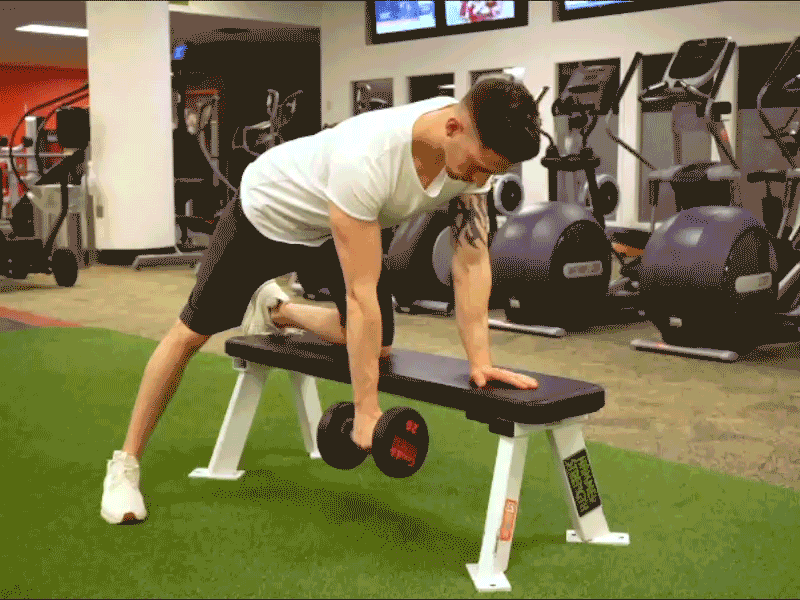Rowing, especially the dumbbell row is an essential movement that strengthens many muscle groups, including the rhomboids, posterior deltoids, mid and lower trapezius, latissimus dorsi, the biceps and your grip.
To unlock its full potential, this essential movement needs to be done properly. Follow the steps below and learn how to do a perfect dumbbell row.
How to
Start by holding a dumbbell in your left hand, while placing your right knee and outstretched right hand on a sturdy thigh-high platform or bench. Bend forward until your back is parallel to the floor, maintaining a natural flat posture with your back throughout the entire exercise. Your eyes should be looking down but slightly forward. Engage your core muscles throughout this exercise and keep your neck in a neutral position.
Initiate the rowing motion by squeezing your shoulder muscles and driving your left elbow up towards your shoulder blade. As you pull the dumbbell upward, be sure to keep your torso still while you squeeze your back muscles. At its highest point, the dumbbell should touch your lower chest with the upper arm at the midline of your body. Slowly lower the dumbbell back to the starting position and repeat.

If you’re still having trouble with this movement, you could be experiencing one or all of these common problems.
Start with the stance
When you’re learning how to do a dumbbell row, it’s important to control your hips and trunk. That’s why it’s a good idea for beginners to keep one hand on a bench to help balance the midsection. Be sure to keep your hips square to the ground, your core active and your shoulders slightly higher than your hips throughout this exercise.

Maintain back tension
Before you start to row, squeeze your shoulder blades inwards towards the spine. This will prevent you from completing the movement with a rounded upper back, protecting your shoulders. Beginners often forget this part and will sometimes shrug their shoulders upward, which can lead to tension or injury in the rotator cuff. At first, you will have to make this squeeze intentional, but after a while, it will become one fluid motion.
Pull with your back, not your biceps
When you get into position, it may seem like simply pulling the dumbbell upwards is an easy feat; however, how you pull up the dumbbell is key. Although your biceps will be involved in this move, many people over-activate them instead of engaging the latissimus dorsi and rhomboid muscles in your back.
Don’t use momentum
As the weight starts to feel heavy, it’s natural to try and use momentum to help finish your reps. Unfortunately, using too much momentum could lead to excessive rotation of your trunk. Too much momentum can minimize the work your muscles are forced to do; therefore, lessening the effectiveness of the exercise.
Follow these tips, and you’ll nail your next dumbbell row!
